NAPLES TOURIST INFORMATION
The Ultimate Guide 2024If you are planning to visit the Capital of Southern Italy, make sure not to miss this guide: I listed for you all the essential tourist information you need to get the best out of your holiday and avoid unpleasant surprises!
Naples definitely deserves a place in the list of the most fascinating Italian cities. The “City of the Sun” will not abandon your heart so quickly with its vibrant culture and art.
As some of you already know, Naples is my birth town. I often still go there (almost every year, actually), and I can’t help but love this city. It’s such a beautiful place! From the amazing food to the fascinating local traditions, the enchanting landscapes and the infinite adventurous things to do, it will make your holiday unforgettable.
Like any big city, Naples is really chaotic, and it can seem a little scary at a first impression; however, nothing some tips can’t help with! So keep reading to find out all the essential tourist information you need to know before visiting the city, from the emergency contacts to some safety tips and how to move around!
This article may contain affiliate / compensated links. For full information, please see our disclaimer here.
Is Naples worth visiting?
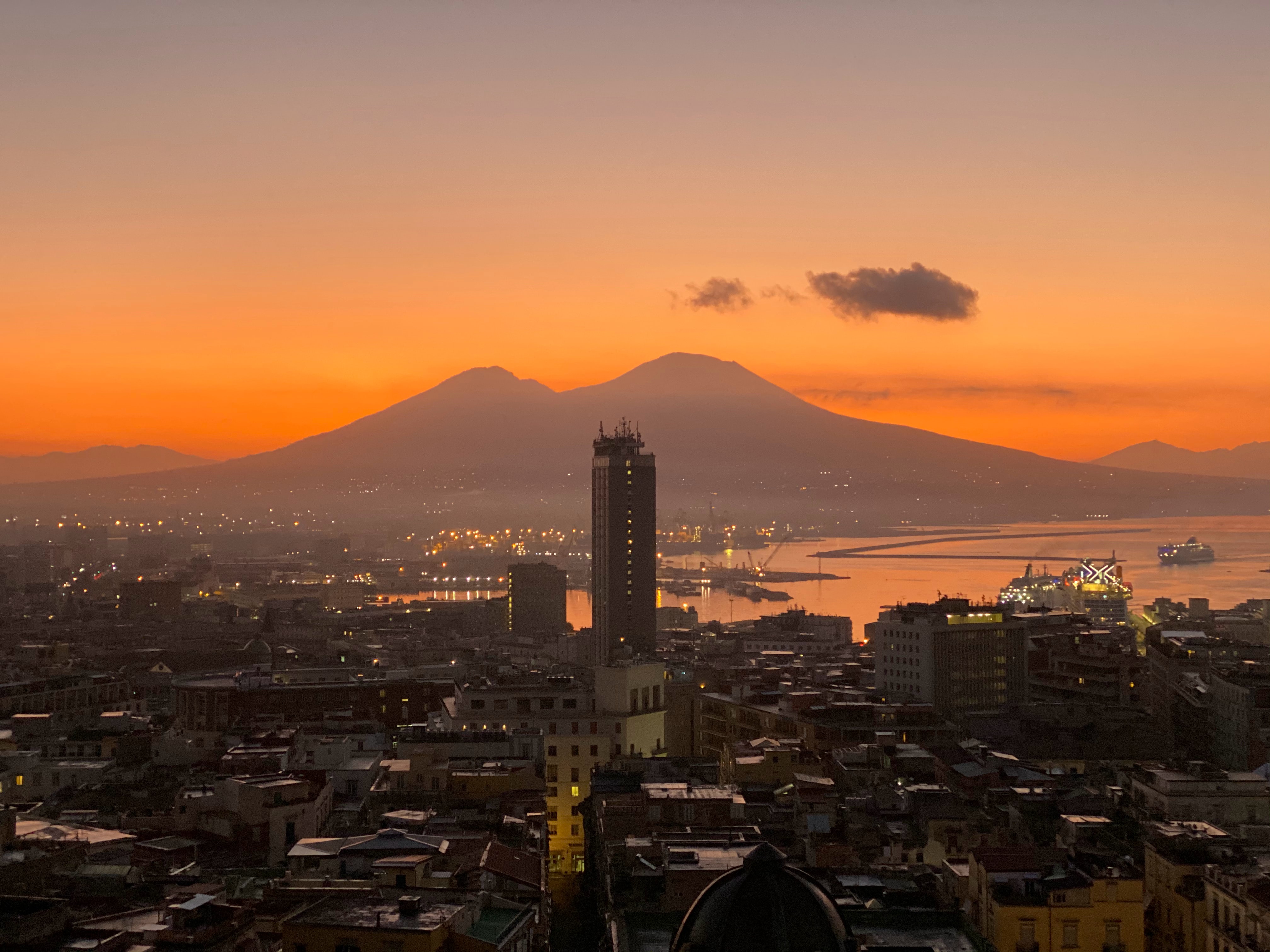
I have heard this question so many times. So let’s start by saying that, in my idea, ANY place is worth visiting, because no place in the world will leave you without having filled your luggage with memories and adventures.
Naples is, and I will never be too tired to repeat this, a fantastic city. It has it all: it has a unique ancient character, but it’s also very modern at the same time. Walking through the narrow lanes of the historic centre will make you discover its distinctive heritage and truly “feel” the city’s soul, while if you’re up for a fun night, the numerous clubs and disco beaches will offer you plenty of choices.
The city has just too many things to do; you can explore ancient ruins like Pompeii and Ercolano, hike the famous and dangerous Mount Vesuvius, discover its fantastic beaches, and more. And let’s not forget: it’s also the city of pizza and coffee!
As you can see, there are just too many reasons to visit the Southern city. However, if you’re not 100% convinced yet, read my article listing 6 good reasons to visit Naples.
Safety tips to visit the city
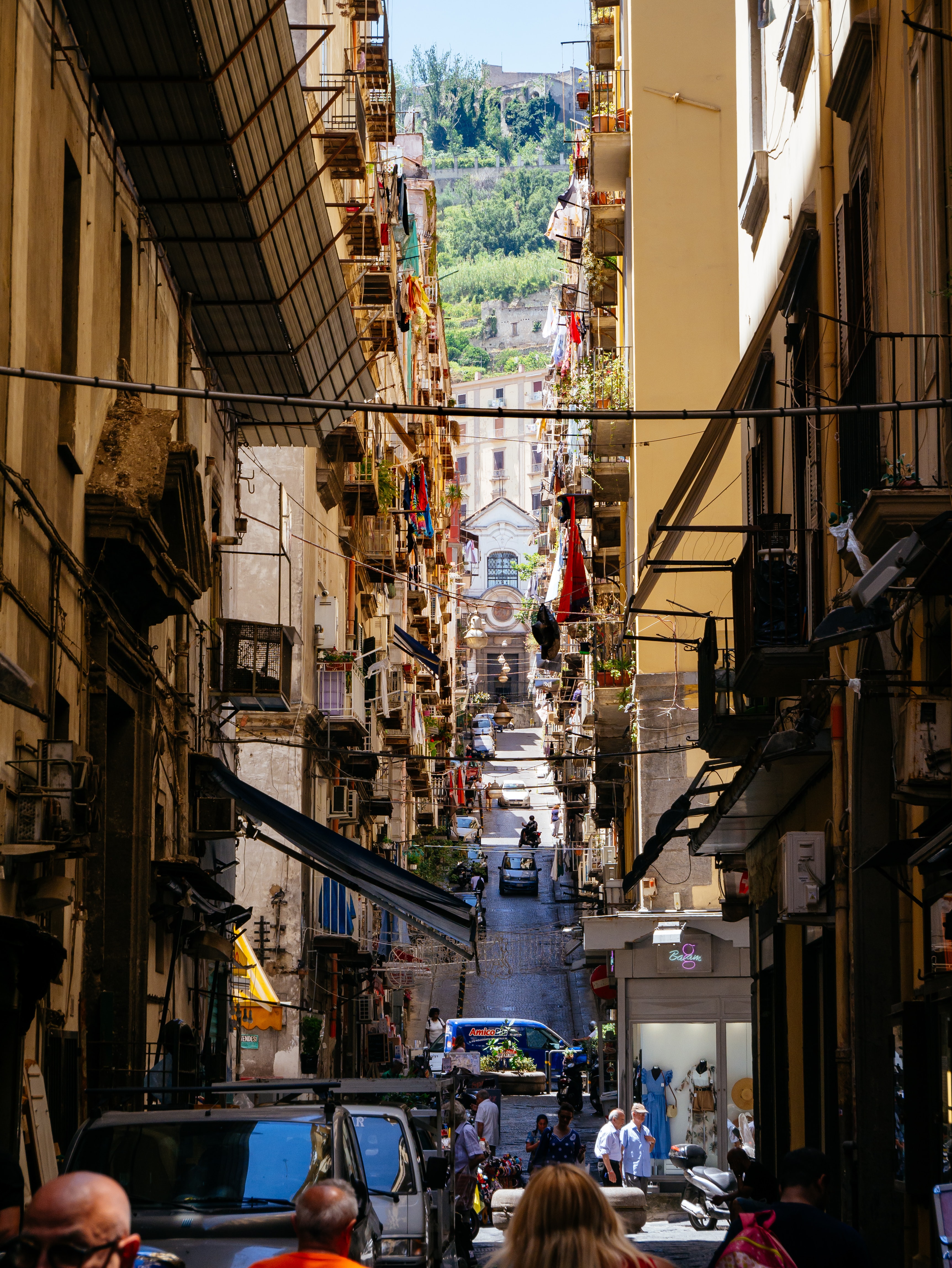
Like any big city, muggings, robberies and scams can happen; however, these are way more uncommon than what people think. When someone asks me if it is safe to visit Naples, I always reply by saying that it’s not dangerous; however, use your common sense.
The rules apply for every place: don’t expose your expensive cameras, phones or watches as a trophy. Also, mind where you carry your wallet, as pickpockets are common in crowded public transports.
In all the 18 years I spent living in Naples, I never had any kind of problem. However, I always preferred a crossbody bag rather than a handbag when I knew I was going to a crowded place (especially in the historic centre, the metro or the buses).
I also avoided walking around in isolated streets at night by myself, and if it was late, I usually took a taxi to get back home instead of waiting for buses for hours. Despite the attention to these details, I would really suggest you get travel insurance for extra peace of mind. The price depends on what kind of traveller you are, but you can find some available for any budget.
Related: Areas to avoid in Naples.
Naples’ emergency numbers
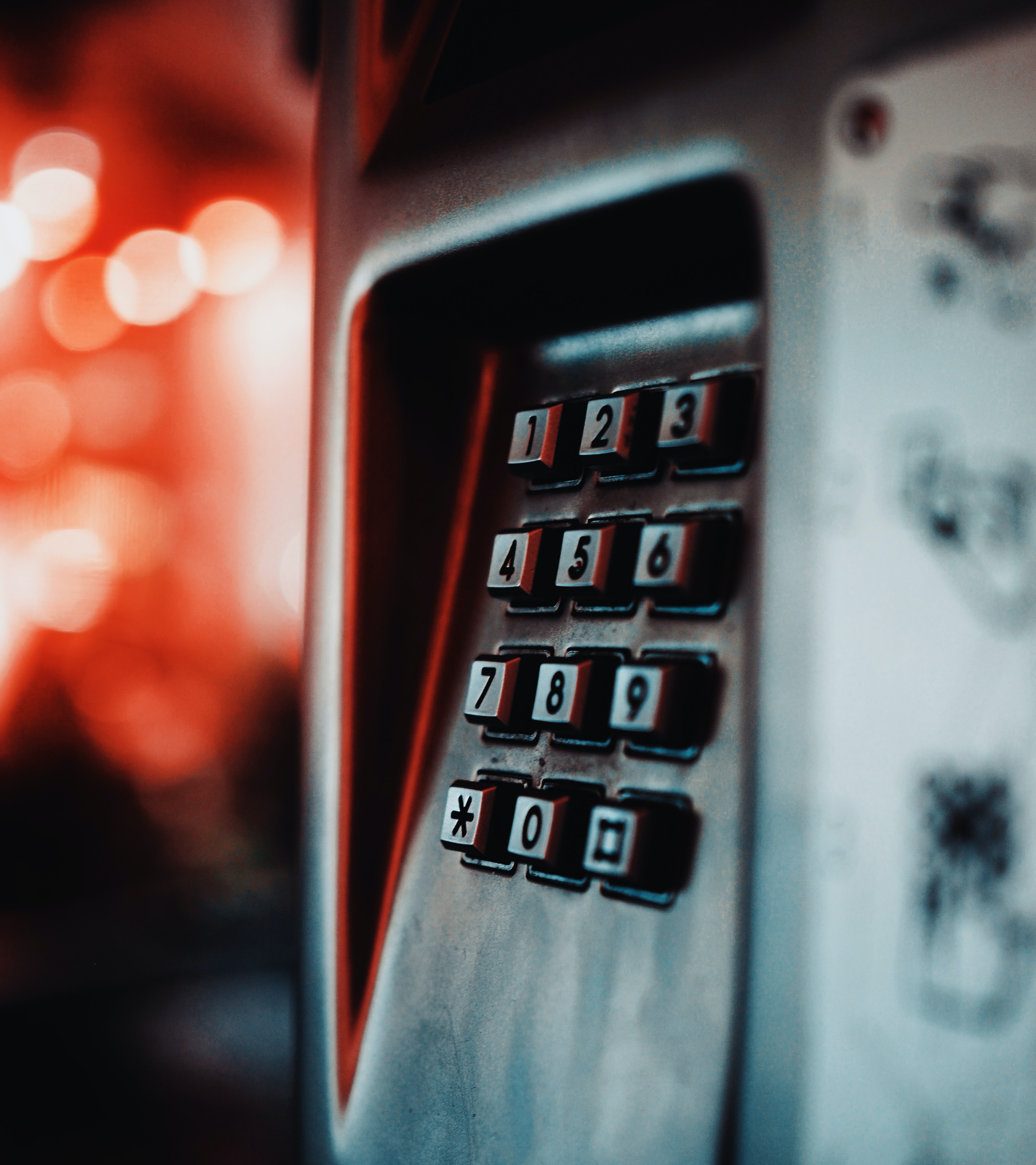
One of the things I always do before visiting a place is to look up the emergency numbers and write them down. I know I am extra cautious, but you can never know… it’s always better to be prepared for any inconvenience!
Italy’s country code is +39 (3900 for international access).
- Naples’ emergency numbers are:
- Ambulance: +39 118
- Police: +39 112/113
- Fire: +39 115
- Emergency Department (24h): +39 0817528282 / +39 0817520696 / +39 0817520850
- Psychiatric Emergency Department: +39 0817434343
- Obstetric Emergency Department: +39 0817472859 / +39 0817472848
- Poison Emergency Department: +39 0817472870
- Open Pharmacies Near You: +39 1100
- Stolen Cars Service: +39 0817941435
- Animals Emergency Department: +39 081293133
Naples’ city map
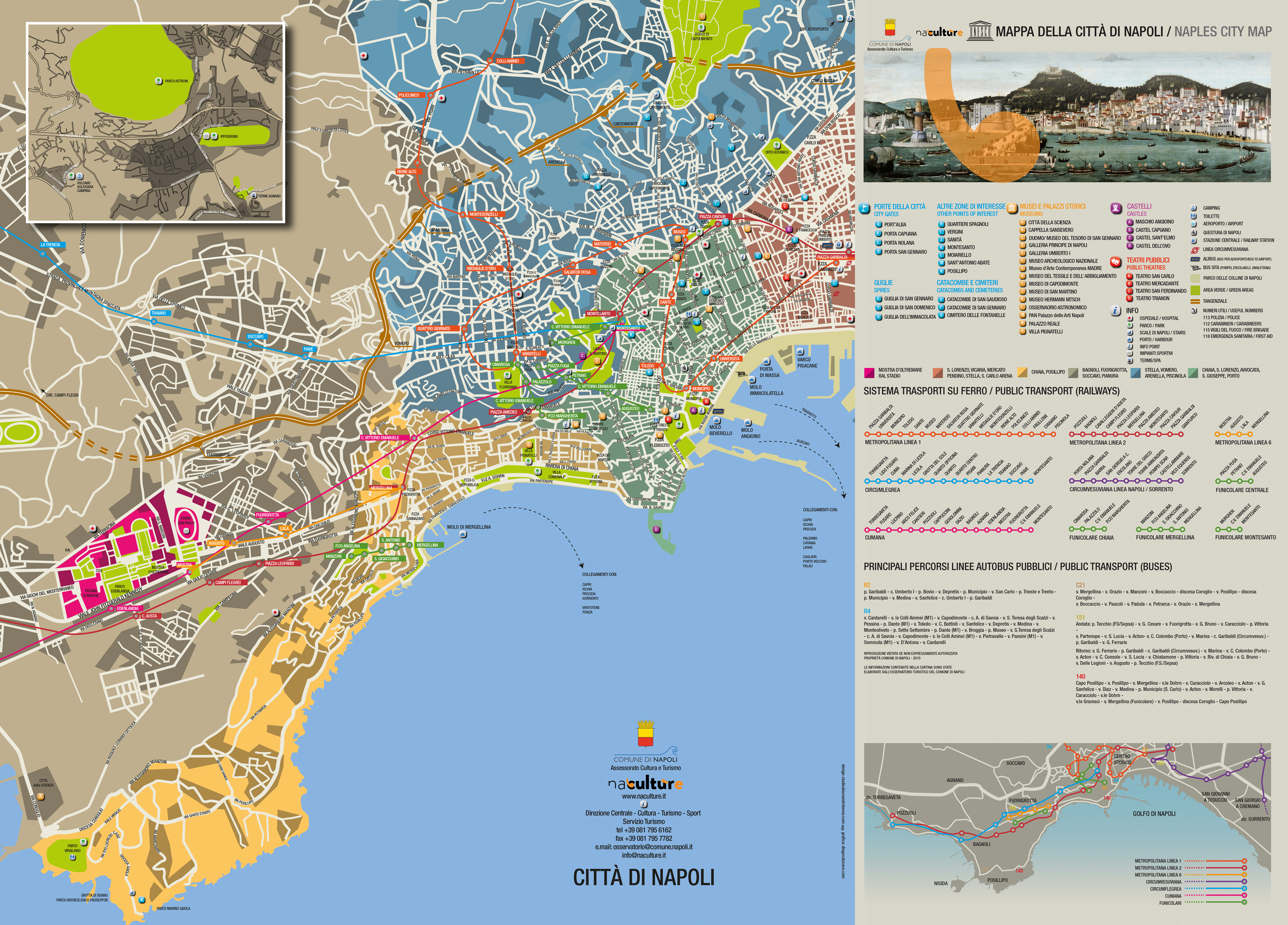
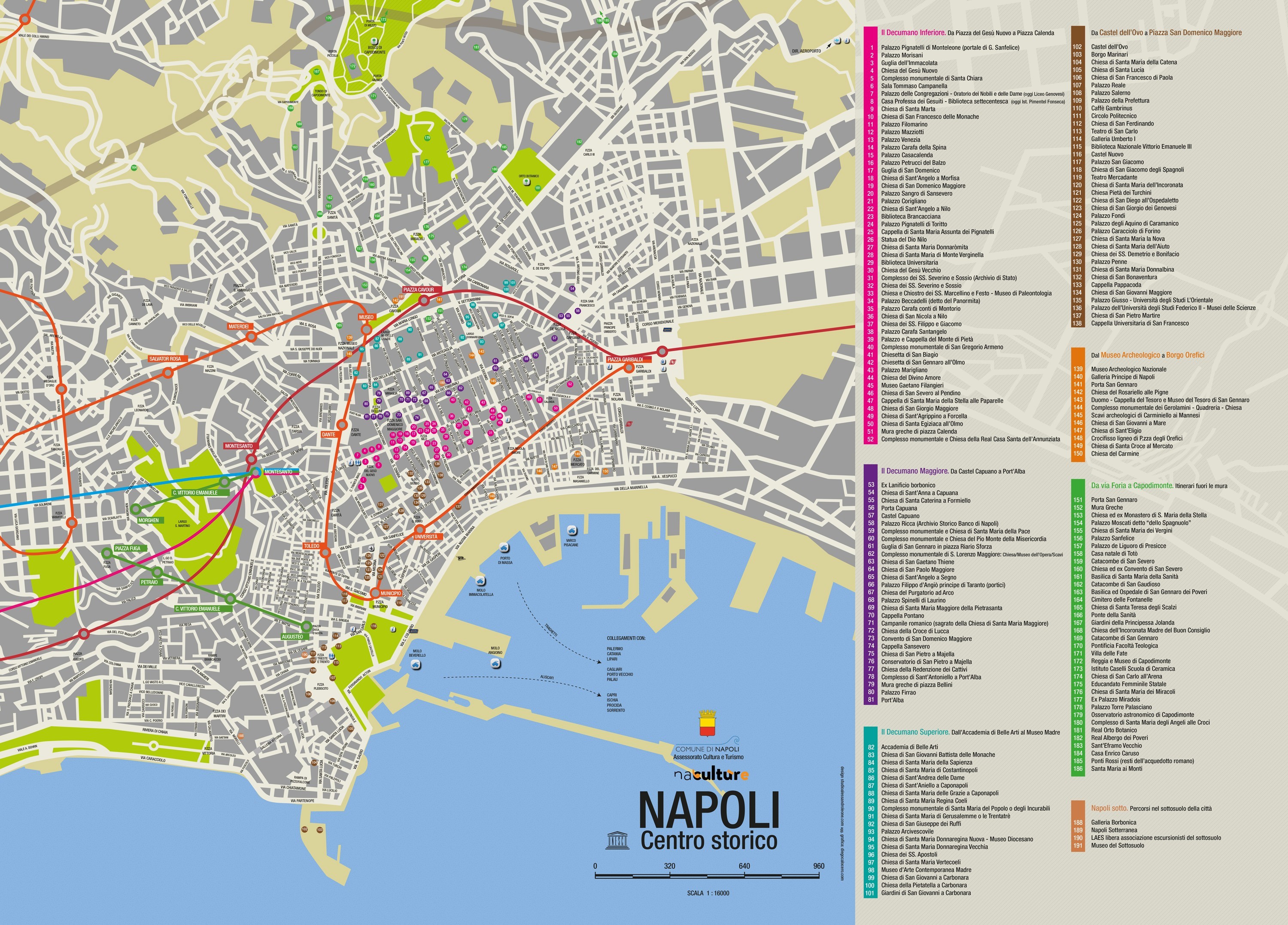
Naples is a very big city, and getting lost while exploring around can be pretty easy. But don’t worry! Below you can find the map of the town, with the main public transports routes and the principal attractions.
I know Google Maps often saves us all if we are lost. However, it’s always a good idea to have a paper map too. You know, just in case your phone shuts down or you have no signal. You’ve got to be extra cautious, remember?
Cheap ways to visit Naples
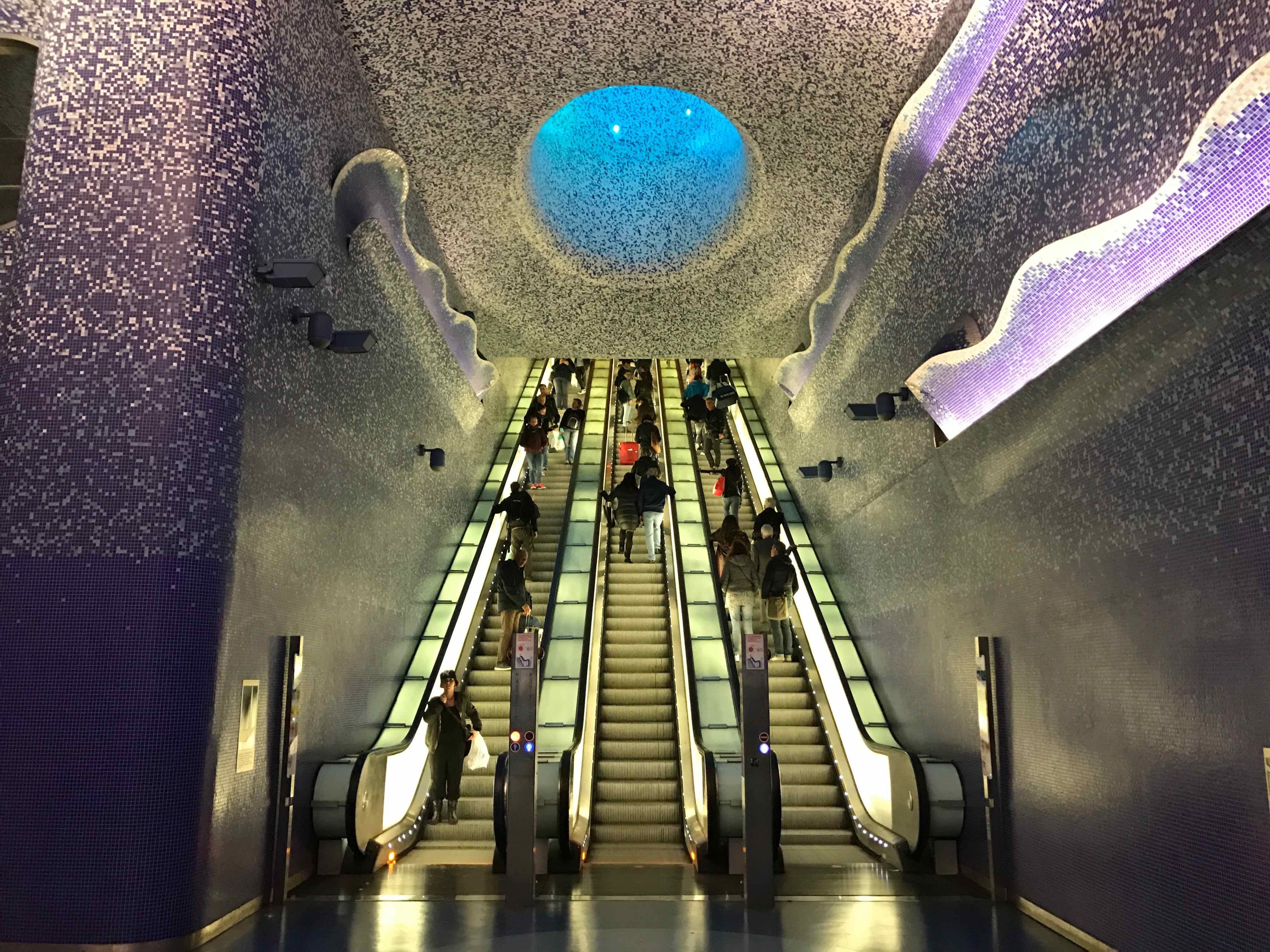
As I mentioned in my article “best things to do in Naples and surroundings“, the Southern city is the perfect destination even if planning a low-cost holiday. There are tons of things to do in the Campania region, and most of these don’t require a massive amount of money. Especially if you are the kind of person who plans in advance, you will have a lot of options to explore the city while saving money.
Related: 7 things to do in Naples if you are low on a budget.
One of the best ways to discover the city’s main attractions without paying a fortune is the Campania Artecard. This card allows you to visit different attractions without having to pay the expensive entrance fee every time. You can also choose between the 3 days Artecard, which includes skip-the-line tickets for two attractions of your choice, 50% discount from the third ticket on, and all the public transports, or the 7 days Artecard, which includes skip-the-line tickets for 5 attractions and 50% discount from the 6th ticket on. This option is definitely cheaper if you don’t have your own vehicle or plan to stay in the city for 7 days and want to explore its fascinating sites.
An excellent way to move around Naples is the Metropolitana (subway), because it’s cheap and faster than the buses. For visiting the city centre, take Linea 1.
A curiosity? The station of Toledo (picture above) has won the LEAF Award in 2013 as “Public Building of the Year”, and was later awarded as the “most beautiful subway station in Europe”. So I’d say it’s worth a visit!
Rent a vehicle to explore the city
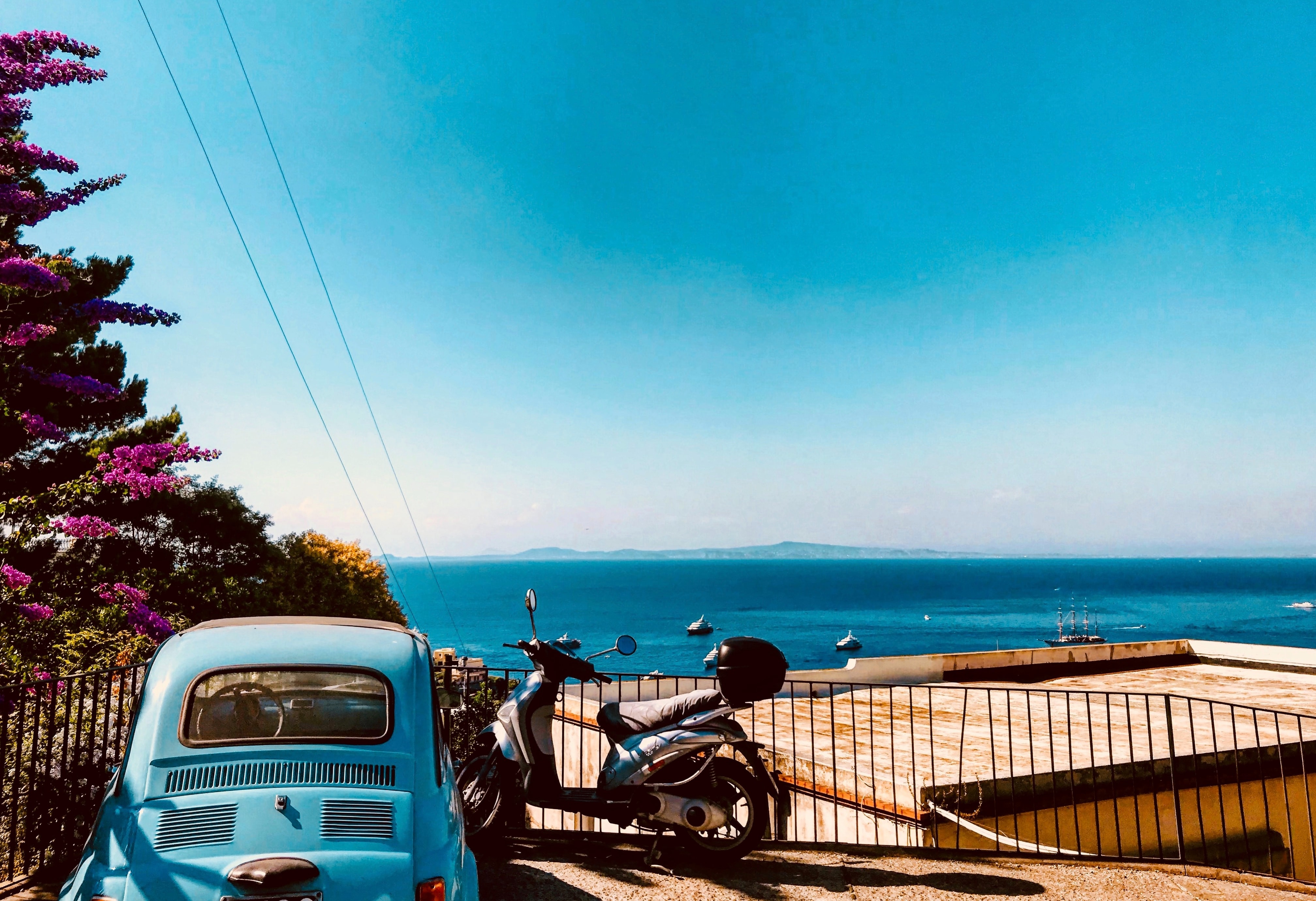
Let’s be honest: public transports in Naples are a nightmare. They are almost always late, often overcrowded, can be dangerous at night and you might end up wasting hours of your holiday waiting for buses. I know, it sucks.
The easiest, fastest and less stressful way to visit the city is by scooter. Sure, if you have your own car and bring it with you, then it’s great. However, before getting there, you have to know that parking in Naples city centre is almost impossible. So let’s just say that you might have more chances of winning the lottery.
If you’re staying in a hotel that provides parking, you will not have this problem, and you could also rent a car to move around. Otherwise, stick with the scooter: it’s easier to find a parking spot and, let’s not forget, visiting Italy on the Vespa like a true Italian it’s a great experience.
For car rental, I usually use Kayak. I like it because it compares prices from different companies, thus usually offering very cheap options. It also allows you to rent it directly from the airport, making you save the money for the taxi to the city centre, usually very expensive.
If you decide to go for the scooter instead, you can find some cheap options here.
Transfer from the airport
If you are planning your trip to Naples, you are probably wondering how to get from the airport to the city centre, especially after having read so many times about the unreliability of public transports in the Italian city.
The airport is not really distant from Central Station, and it is connected with a bus called “Alibus“. The bus stops at Piazza Garibaldi (Central Station) and terminates at the port. The service is active every day, every 20 minutes (if you are lucky enough!). The ticket price is €5, and you can buy it at the ticket office close to the bus stop.
Another option is taking a taxi that would bring you straight to your destination. This would obviously be more expensive, but definitely, the easiest way to get to your hotel. BE CAREFUL! Outside the airport, you will find many unregistered taxi drivers trying to offer you an overpriced drive. Stick to the registered taxi and ask for a fixed tariff for your drive. You could also find someone else to share it with and spend less!
The third option (the most convenient, in my opinion) is to rent a car. This is definitely more expensive than public transports, but way safer and comfortable!
Best time to visit

Any time of the year has its pros and cons to visit Naples. I love the Neapolitan summer vibe: shops are open until late, there are always many people on the street, and it looks like everybody is partying all the time. However, the months of July and August are always overcrowded, and you might end up not doing most of the things you wanted to do, especially with the COVID restrictions that allow only a limited number of people to certain attractions. Moreover, prices double up!
The city can be cold and rainy in winter, and you would probably not enjoy the fascinating Neapolitan landscapes. Also, some hotels stay closed during the cold season.
The best period to visit Naples is definitely April-May-June and September. In those months, you should avoid the overcrowded summery atmosphere, and still enjoy the beautiful weather.
Some general info
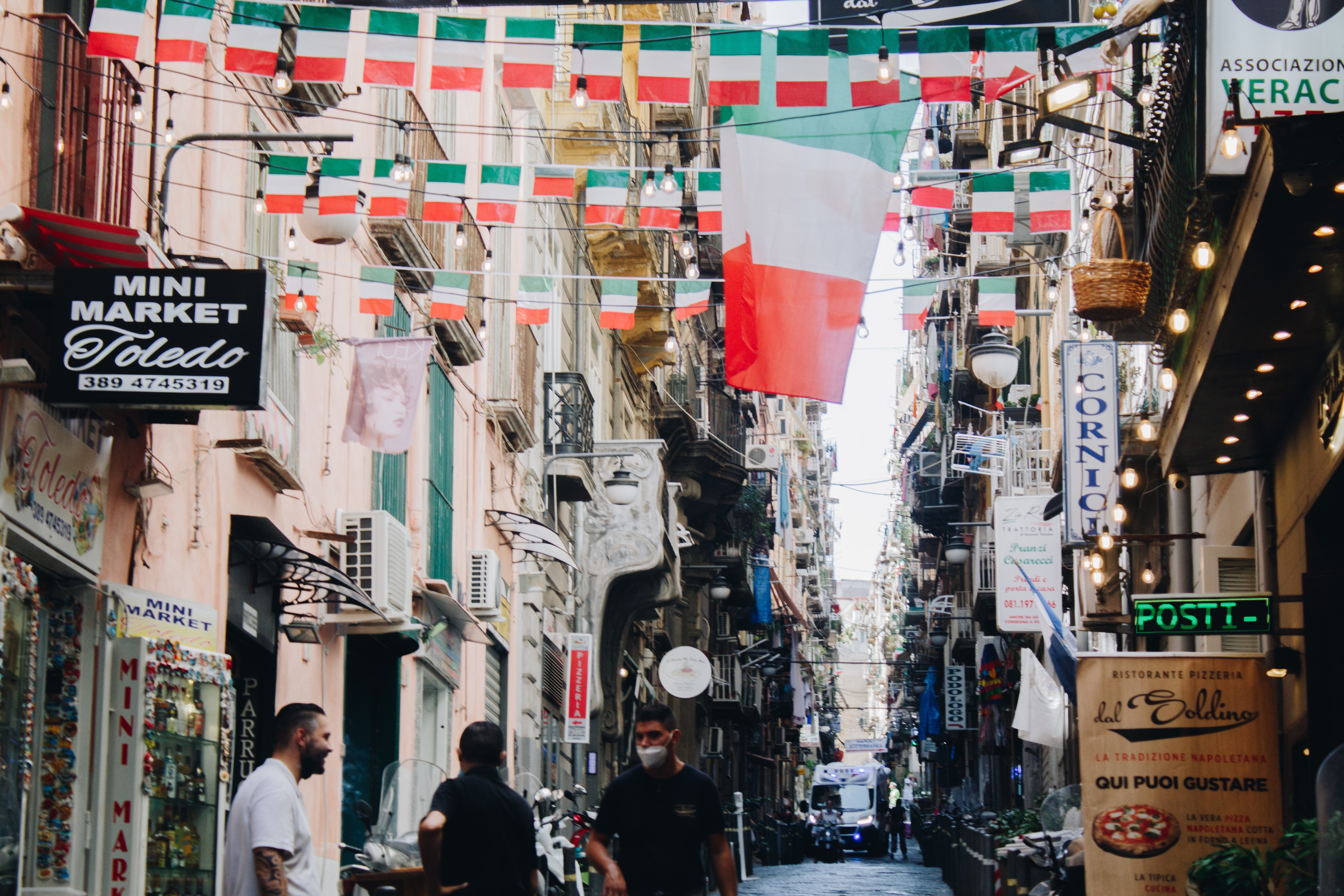
Currency: Euro (€)
Language: Italian. English is spoken in the touristy parts of the city, so don’t worry, you’ll be fine!
Visa: Being a member of the European Union, Italy allows all the EU passport holders and the countries included in the Schengen Agreement. For those coming from outside these countries, a 90 day Visa will be required. You can find more info here.
Budget: It really depends on the way you want to travel and the season. Prices in summer go extremely up. Roughly, if you move around with public transports and eat out only once, you can stay as low as €40 per day. Local restaurants are not expensive, especially if you avoid the touristy ones. Pizza is roughly €4-€9, and the average for a lunch/dinner in a local restaurant is €10-€15 per person.
You can find some hotels and b&b on a budget for €20-€40 per night, even though the average is €50-€70, depending on the season, while luxury hotels are €100-€200+ per night.
Check out these similar articles!
Kikka
EDITOR IN CHIEF

